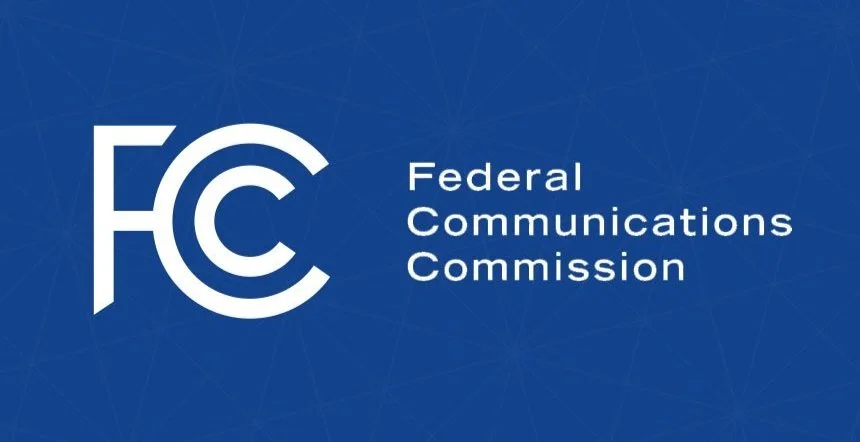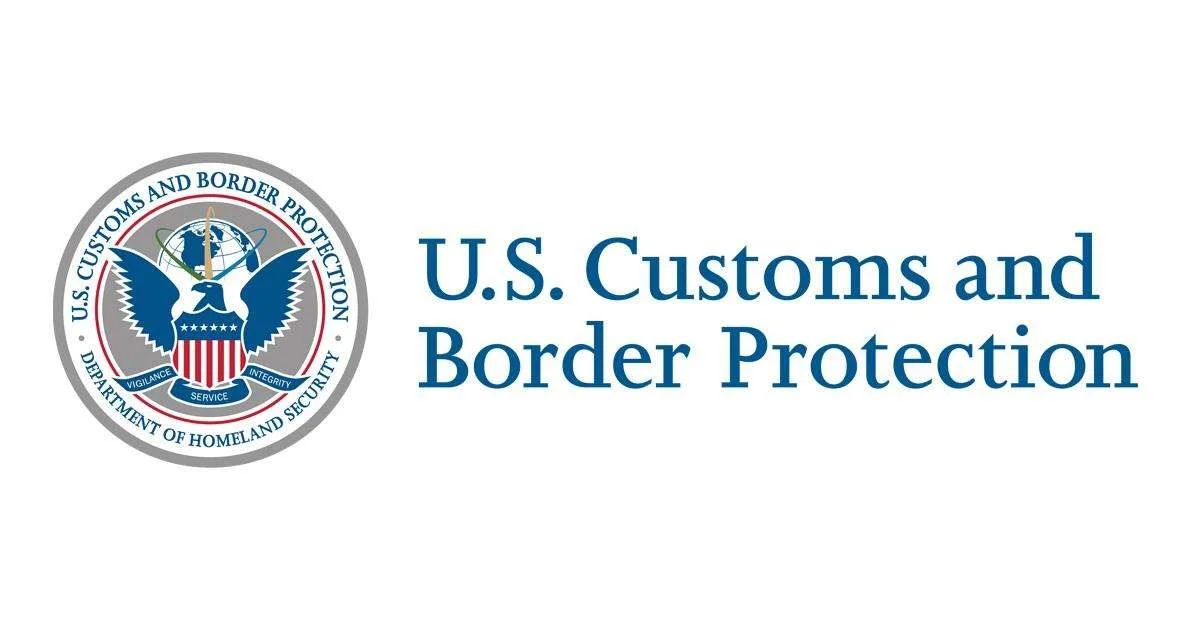
Regulatory Advocacy
Regulatory efforts are often less well-known to most people that don’t work in Washington, so we wanted to provide some brief explanations of how some of the critical parts of Agency engagement and who ADI works with.
What is Notice and Comment Rulemaking?
Early engagement with federal agencies during the rulemaking process is crucial for stakeholders who want to influence the final shape of regulations. Notice-and-comment rulemaking is the standard procedure for most federal regulations in the United States. It begins when an agency publishes a Notice of Proposed Rulemaking (NPRM) in the Federal Register. The public is then given a period, usually 30-60 days but sometimes longer, to submit comments on the proposed rule. After this, the agency reviews and considers all substantive comments received before publishing the final rule, along with a discussion of the comments and the agency's responses.
The requirement that the government respond to all substantive comments is a key feature of this process. This obligation serves several important purposes: it ensures that the agency considers diverse viewpoints and expert opinions, creates a record for judicial review should the rule be challenged in court, promotes transparency and accountability in the rulemaking process, and provides an opportunity for the public to influence the final shape of the rule. When responding to comments, the agency must address all significant issues raised. This doesn't mean responding to each comment individually, but rather addressing the substance of all relevant arguments and data presented. The agency's responses must be reasonable and based on the rulemaking record.
This is critical for the agricultural drone industry. If we can unify and create cohesive, well supported arguments that are representative of a significant portion of the industry, the FAA will need to substantively respond in a way they never will after the NPRM process ends. This is especially important after the 2024 Supreme Court decision in Loper Bright v. Raimondo, which significantly reduces the freedom agencies have to interpret the directives from Congress.
Once a final rule is published, it becomes much more difficult to change. This is due to several factors. Once published, the rule has the force of law and can only be changed through another formal rulemaking process or by an act of Congress. Courts generally give deference to agency interpretations of statutes they administer (known as Skidmore Deference (was Chevron Deference until Loper Bright, link here), making it harder to challenge finalized rules. Initiating a new rulemaking process to change an existing rule requires significant time and resources from the agency. Furthermore, changes to existing rules often face political scrutiny and potential opposition.
Given these factors, early engagement in the rulemaking process is critical for several reasons. Agencies often seek informal input before publishing an NPRM, so early engagement can help shape the initial proposal in a favorable direction. With early awareness of upcoming rules, stakeholders have more time to conduct research, gather data, and prepare thorough, well-reasoned comments. Early engagement also allows time to form alliances with other stakeholders, potentially increasing the impact of comments. Engaging early and throughout the process provides multiple opportunities to influence the rule's development. Once a rule is finalized, it becomes much harder to change, so early engagement is often the best and sometimes only chance to significantly influence the rule's content. Consistent engagement throughout the process can signal to the agency the importance and complexity of the issues at stake.
The structure of the notice-and-comment process, combined with the finality of published rules, makes early and sustained engagement crucial for stakeholders who wish to influence regulatory outcomes. The requirement for agencies to respond to all substantive comments provides a significant opportunity for public input, but this opportunity is most effectively leveraged through early and thorough participation in the rulemaking process.
The Federal Aviation Administration (FAA)
ADI firmly believes that the FAA should strongly consider drafting a separate 'part' for agricultural aviation drones, distinct from the current Part 107 regulations.
This argument is based on the unique operational characteristics, economic impact, and safety considerations of agricultural drones, as well as the recommendations from the BVLOS ARC report.
Specialized Operational Weights and Environment - Agricultural drones operate in a distinct environment that sets them apart from other commercial drone applications, including delivery drones. As highlighted in the BVLOS ARC's recommendations AG 2.2 and 2.3, the FAA should create rules that allow for operation through compliance with regulations alone, without the need for waivers, based on the weight of the drone and its operational environment.
Weight: Agricultural spray drones are significantly heavier than most other drone categories, with the exception of heavy-lift logistics drones. However, their operational environment is fundamentally different, as described below. Further, their flight times are so constrained that recreational flights are unlikely.
Low altitude operations: Agricultural drones typically operate below 100 feet AGL for heavy agricultural drones, and slightly higher for multispectral imaging drones.
Fixed operational areas: These drones work over prescribed environments such as crops and orchards, unlike the variable urban and suburban environments envisioned for delivery drones. This is especially important because, if trailered onsite (likely - given their short flight duration) there is little reason for them to frequently, if ever transit over humans outside their immediate operators. Further, in the event of a crash, they would most likely land in a field, doing some quantity of crop damage, but not injuring 3rd parties or their property - a definite risk with logistical drones.
Predictable flight patterns: Agricultural drone operations can be described relatively uniformly across the country, with consistent operational parameters and tasks.
Economic Impact and Resource Conservation - Agriculture is a cornerstone of the U.S. economy, and agricultural drones offer significant potential for efficiency gains, safety improvements, and cost reductions. A tailored regulatory framework would not only facilitate the adoption of this technology but also conserve FAA resources by streamlining the approval process for a sector with relatively uniform operational characteristics. Unlike delivery drones, which are still in an experimental phase and backed by high-dollar logistics companies, agricultural drones represent a mature technology being adopted by individual farmers and small agricultural businesses. These stakeholders are making significant financial investments in drone technology, often representing a substantial line item in their budgets. A specialized regulatory framework would provide greater certainty for these investments and support the growth of this critical sector.
Safety and Environmental Considerations - Agricultural drones present unique safety and environmental considerations that are not adequately addressed by the current Part 107 regulations. A separate 'part' for agricultural drones could more effectively address these concerns, promoting safe and responsible operations while also recognizing the unique risk profile of agricultural drone use.
Pesticide and fertilizer application: Specific regulations are needed to address the safe and effective application of agricultural chemicals, including measures to prevent and mitigate drift.
Wildlife protection: Operating in rural environments requires specialized measures to minimize the risk of collisions with wildlife.
Data privacy and security: Given the sensitive nature of agricultural data collected by drones, specific guidelines for data collection, storage, and sharing are necessary to protect proprietary farming information.
Contrast with Delivery Drones - While delivery drones may be of comparable size to some agricultural drones, they face significantly different challenges:
Experimental nature: Delivery drone technology is still largely in the experimental phase, grappling with issues such as limited battery life and complex urban navigation.
Variable environments: Unlike agricultural drones, which operate in relatively consistent environments, delivery drones must navigate diverse urban and suburban landscapes.
Backing and investment: Delivery drone development is often backed by high-dollar logistics companies, in contrast to the individual farmers and small businesses investing in agricultural drones.
These differences underscore the need for a separate regulatory approach for agricultural drones, which represent a more mature technology with immediate practical applications and economic impact.
Regulatory Efficiency - Creating a separate 'part' for agricultural drones could actually streamline the regulatory process for both the FAA and drone operators. By establishing clear, sector-specific regulations, the FAA could reduce the need for individual waivers and case-by-case assessments, leading to more efficient use of regulatory resources and faster adoption of beneficial drone technology in agriculture.
Europe’s SORA Framework (more info here) - One source of valuable information on how to improve the drone-regulation space is considering what from the European SORA Framework is useful for us to adopt in the U.S. ADI does not believe that it is better (or worse) than the FAA’s approach, but it is important that we consider other approaches to regulation to find the best approaches. The Specific Operations Risk Assessment (SORA) framework is a methodology developed by the European Union Aviation Safety Agency (EASA) for assessing and mitigating risks associated with drone operations. It plays a crucial role in Europe's approach to regulating unmanned aircraft systems (UAS) operations, particularly those that fall outside the standard scenarios covered by the "open" category of operations.
Conclusion - The creation of a separate 'part' for agricultural aviation drones is not only justified but necessary to support the growth and innovation of this important sector. By recognizing the unique operational characteristics, economic impact, and safety considerations of agricultural drones, the FAA can create a more targeted and effective regulatory framework. This approach would ensure public safety and environmental protection while also facilitating the adoption of drone technology in agriculture, ultimately supporting American farmers and the broader agricultural economy. Furthermore, it would align with expert recommendations from the BVLOS ARC and create a model for how drone regulations can be effectively tailored to specific industries as the technology continues to evolve.
The FCC
The Federal Communications Commission (FCC) is an independent U.S. government agency that plays a critical role in regulating interstate and international communications within the United States. Established by the Communications Act of 1934, its primary mandate is to ensure the effective and efficient use of the nation's airwaves and communications infrastructure, encompassing radio, television, wire, satellite, and cable.
The FCC's responsibilities are broad and impact nearly every aspect of modern communication. Key functions for the ag-drone industry include:
Spectrum Management: The FCC allocates and licenses the electromagnetic spectrum, which is essential for wireless communications like cellular phones, Wi-Fi, and broadcast radio and television. This involves balancing competing demands and preventing interference.
Consumer Protection: The FCC protects consumers by enforcing rules against deceptive practices and managing consumer complaints.
Public Safety and Homeland Security: The FCC plays a vital role in ensuring that communication networks are resilient and available for emergency services, and it works to strengthen the nation's communications infrastructure against threats.
Licensing and Enforcement: The FCC processes applications for various licenses (e.g., broadcast, wireless) and enforces its rules and regulations, which are codified in Title 47 of the Code of Federal Regulations (CFR). This can involve investigations, issuing fines, and even revoking licenses.
The FCC's Entities List
While the FCC does not maintain a single, publicly comprehensive "Entities List" in the same vein as some other government agencies, it does identify and restrict certain entities based on national security concerns. A notable example is its designation of companies like Huawei and ZTE as posing a national security threat to the communications supply chain. This designation, often found under FCC orders and public notices related to its "Secure and Trusted Communications Networks Act," prohibits the use of federal subsidies (like those from the Universal Service Fund) to purchase equipment or services from these designated entities. The STCNA List is the list that DJI and Autel would be added to through § 1709 of the 2025 NDAA.
The FCC's actions in this area are primarily driven by its mandate to protect the integrity and security of U.S. communications infrastructure. These restrictions directly impact what equipment and services can be used by communications providers in the United States, aiming to prevent espionage or sabotage.
Contrasting FCC's List with BIS and Other Entities Lists
Discussing Entities Lists gets confusing, as there are a number of agencies which manage lists colloquially referred to as ‘The Entities List’. Obviously, each one is agency-specific, but the FCC's approach differs significantly from other U.S. government agencies, particularly the Bureau of Industry and Security (BIS) and the Office of Foreign Assets Control (OFAC).
Bureau of Industry and Security (BIS) Entity List: The BIS, under the Department of Commerce, maintains the comprehensive Entity List. This list identifies foreign persons (including businesses, research institutions, and governments) for whom there is reasonable cause to believe they are involved in activities contrary to the national security or foreign policy interests of the United States. Inclusion on the BIS Entity List triggers specific license requirements for the export, re-export, or in-country transfer of items subject to the Export Administration Regulations (EAR), particularly U.S. technologies and other controlled items. The BIS list is generally more focused on export control and preventing the diversion of sensitive goods and technologies. It also maintains other lists like the Denied Persons List and the Unverified List.
Office of Foreign Assets Control (OFAC) Specially Designated Nationals (SDN) List: OFAC, under the Department of the Treasury, administers the Specially Designated Nationals and Blocked Persons (SDN) List. This list comprises individuals and entities subject to U.S. economic sanctions programs. Being on the SDN List generally means that U.S. persons are prohibited from engaging in transactions with or providing services to these individuals and entities, and their assets under U.S. jurisdiction are blocked. OFAC's focus is on financial sanctions and counter-terrorism/proliferation.
Key Differences:
Scope of Restriction: The FCC's "list" (or rather, its designations of specific entities) primarily impacts the use of federal funds for certain communications equipment and services within the U.S. In contrast, the BIS Entity List primarily imposes export controls on specific items to designated entities, while the OFAC SDN List implements broad financial prohibitions and asset blocking.
Governing Authority and Intent: The FCC's actions stem from its authority to regulate communications infrastructure for national security. BIS's lists derive from its export control authority to prevent diversion of goods and technologies. OFAC's lists are part of its mandate to enforce economic sanctions.
Types of Transactions Covered: The FCC's restrictions are largely about procurement and deployment within U.S. networks. BIS's restrictions govern the movement of goods and technology out of the U.S. (or within foreign countries if U.S.-origin items). OFAC's prohibitions cover a wide range of financial and commercial interactions with designated parties.
In summary, while all these lists aim to protect U.S. national security and foreign policy interests, they do so through different mechanisms and apply to distinct types of transactions and activities. Companies engaged in international trade or dealing with communications infrastructure must consult all relevant lists to ensure compliance.
Customs and Border Protection (CBP)
The U.S. Customs and Border Protection (CBP) is the largest federal law enforcement agency within the Department of Homeland Security (DHS), serving as the nation's primary border control organization. Its multifaceted mission encompasses not only securing the borders against terrorism and illegal entry but also facilitating legitimate trade, collecting import duties, and enforcing a vast array of U.S. laws and regulations related to trade, customs, and immigration. CBP operates at 328 official ports of entry across the United States, managing the flow of goods and people entering the country by air, land, and sea.
As Congress ratchets up pressure against foreign drones that are perceived to present a threat to American national security, CBP is a strong gate against the importation of products Congress does not want in America, be it through appropriations language, placement on one of the Entities Lists, or through legislation such as the Uyghur Forced Labor Prevention Act (UFLPA).
The Uyghur Forced Labor Prevention Act (UFLPA) and Chinese Imports
The Uyghur Forced Labor Prevention Act (UFLPA), enacted in December 2021 and enforced since June 2022, represents a significant tool for CBP in restricting imports, particularly from China. The Act establishes a rebuttable presumption that any goods, wares, articles, or merchandise mined, produced, or manufactured wholly or in part in the Xinjiang Uyghur Autonomous Region (XUAR) of the People's Republic of China, or by entities identified on the UFLPA Entity List, are produced with forced labor.
This "rebuttable presumption" places the burden of proof squarely on the importer. Unless the importer can demonstrate, with clear and convincing evidence, that the goods were not produced with forced labor, CBP is mandated to detain and ultimately prohibit their entry into the United States. This represents a substantial shift from previous "Withhold Release Orders" (WROs), where CBP had to have specific evidence of forced labor for a particular shipment. Under UFLPA, the assumption is that all goods from XUAR are tainted by forced labor unless proven otherwise.



